New entrants and young farmers face an uphill battle when trying to establish farm businesses, with high start-up costs a barrier to entry for many.
Farmers Weekly takes a look at funding and support in different countries across the globe.
See also: Pilot seeks to shape new entrant help for Defra scheme
Ireland
As with other EU member states, support for farmers in Ireland is changing due to reform of the EU agricultural policy, with a new scheme being launched in 2023.
Complementary income support for young farmers will form part of Ireland’s CAP Strategic Plan between 2023 and 2027.
This has been allocated €177.9m (£155m) as part of Pillar 1 of CAP in Ireland, which equates to about €35m (£30.5m) a year.
Fact file: Ireland
- Farms: 135,037
- Average farm size: 33.4ha
- Total farm area: 4.8m ha
The scheme is due to open to applicants under 40 years old from February 2023. The €35m is expected to translate to an average rate of about €178/ha (£153/ha) across the CAP period and is a top up to other support.
Applicants must be setting up a holding – as head of the holding, solely or jointly – for the first time or have set up such a holding during the five years preceding their application.
They must also have completed a recognised course of education in agriculture giving rise to an award at Level 6 or equivalent on the National Framework of Qualifications and be entitled to payment under the Basic Income Support for Sustainability scheme.
The Department of Agriculture, Food and the Marine says:
“This income support decreases the disparity between agricultural incomes and incomes from other sectors of the economy and, therefore, increases the likelihood that young farmers will remain in the agricultural sector, thus improving the resilience of the agricultural sector overall.”
Macra na Feirme represents rural youth in Ireland. Its president, John Keane, said: “Investment is needed by the government in improved farm practices and tangible pathways to farm succession for young people.
“There are more farmers on walking sticks over the age of 80 than there are under the age of 35. More active farmers under 35 will drive emissions reductions and improve farm practices.”
Case study: Karol Devaney, Drumcliffe, County Sligo
© Rural Studies Centre, University of Galway
After graduating with an agricultural degree in 2019, Karol Devaney started his own flock of ewes and took on a lease for a local livestock holding in County Sligo, along with its entitlements.
Mr Devaney was able to receive an additional top-up from his Basic Payment Scheme, through the young farmers’ category of national reserve funding.
This allowed him to continue his farming enterprise, and he hopes to buy some land of his own in the next few years.
“I am the eldest of nine children. Dad is only in his early 50s, so he has a good farming career ahead of him, and it made sense at the time for me to start my own flock,” he says.
Mr Devaney also plans on receiving support through the County Sligo Leader Partnership CLG, which can provide advice and grants worth up to 75% of a project’s costs for rural enterprises
Poland
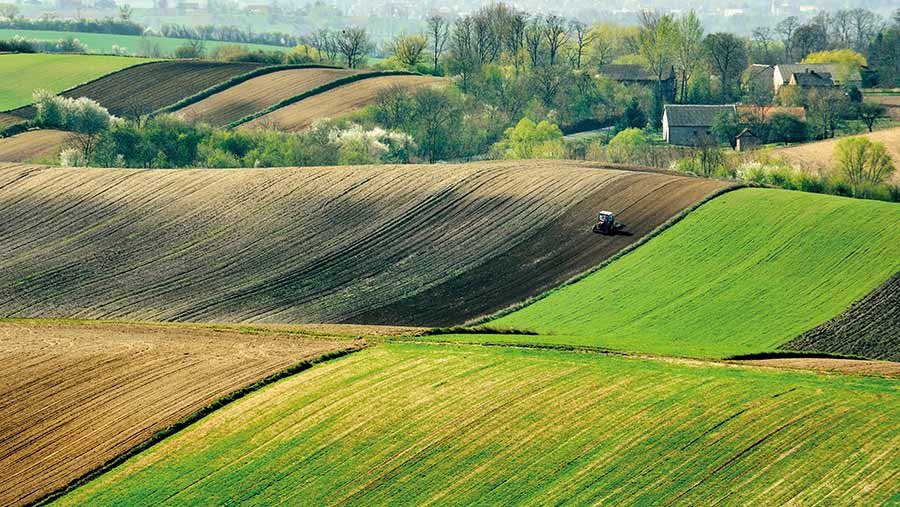
© Jakub/Adobe Stock
As well as the basic direct payment, young farmers in Poland can receive additional payments.
According to Brown & Co partner Adam Oliver, within the first two years, those who are owning or renting a farm in Poland can receive “young farmer support”.
“In the past year, it amounted to a 150,000PLN (27,450) one-off payment, but the amount varies every year and is paid 80% upfront and 20% on business plan completion.”
Fact file: Poland
- Farms: 1.3m
- Average farm size: 11.1 ha
- Agricultural land: 14.7m ha
As in many other EU member states, there are higher rates of grant for young farmers.
For example, with a buildings renovation programme the EU may provide up to 50% in applicable costs.
However, in the case of a young farmer this would typically be 10% higher – so, in this example, 60% of relevant costs would be recoverable, he says.
Preferential land purchase bank loans are also available for eligible young farmers.
“This is particularly important at the moment as it can mean the difference between a preferential interest loan at, for example, 3.5% interest and a commercial bank loan which could be 9% in today’s market,” says Mr Oliver.
European Union countries
According to the EU Commission, only 11% of farm holdings in the EU (EU-27) are run by farmers under 40. The EU is supporting young farmers through training, start-up grants and income support.
Under the newly agreed CAP, each member state will set aside at least 3% of direct payments funding for young farmers. Each country will then decide how this money is allocated.
The CAP is due to be implemented from 1 January 2023, with the young farmer payment included under Pillar 1, which covers income support.
Pillar 2 covers infrastructure, environment and developmental support through the European Agricultural Fund for Rural Development.
Rural development programmes offer enhanced support for young farmers through grants, loans, and guarantees. These are supported by the European Investment Bank and the EAFRD.
Small- and medium-sized farm businesses can apply for a loan from the European Investment Bank, which has a €700m (£601m) funding programme.
At least 10% of loans are guaranteed for farmers under 41. Loans can run up to a 15-year term.
The European Council of Young Farmers says difficult access to credit is one of the biggest barriers for young farmers, and this initiative has potential.
Fact file: EU
- Agricultural holdings: 9.1m
- Average farm size: 17.4ha
- Estimated percentage of EU GDP represented by agriculture: 1.3% – €178bn (£153bn)
- Average CAP income (2020) for each farm: €6,620 (£5,684)
Japan
Labour shortages are an issue for Japan’s agricultural sector, due to an ageing workforce and rural depopulation.
This has led the government to promote farming, both as a career and to support workers already in the sector.
Fact file: Japan
- Farm businesses: 1.08m
- Cultivated land: 4.3m ha
- Gross agricultural product value: 8,938bn yen (£53bn)
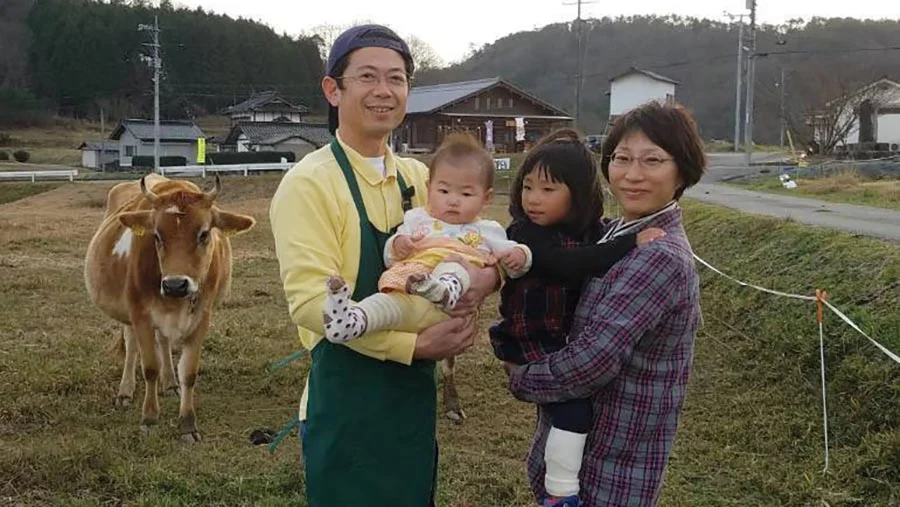
Masashi and Yuko Oda are first-generation farmers near Miyosji, north of Hiroshima © Oda Family
Statistics from the Ministry of Agriculture, Forestry and Fisheries (Maff) show the average age of farmers in Japan was 66 years in 2020.
The number of agricultural workers fell by 20% between 2015 and 2020, and this continues to fall.
Yet there has been a rapid rise in the number of larger farm businesses in recent years.
See also: Field to plate – diversification on Japanese farms
As part of a government effort to raise food self-sufficiency and to tackle rural depopulation, subsidies are offered to new entrants under 45.
This has helped attract a greater proportion of the workforce and new farmers from non-farming backgrounds.
Between 50,000 and 60,000 farmers enter the sector each year in Japan, and according to Maff, just 10% of agriculture workers are aged under 40.
The highest number of younger people are in dairy, flowering plants and shrubs, indoor and protected vegetable cropping.
The OECD Agricultural Policy Monitoring and Evaluation 2021 annual report sets out three programmes to encourage more young farmers and new entrants in Japan:
- Up to 1.5m yen (£9,000) a year is available for the first two years for new young farmers as part of a training period
- Annual grant of 1.5m yen (£9,000) is available for eligible young farmers during the first five years of operation
- Annual subsidy of up to 1.2m yen (£7,225) for new entrants’ training costs in first two years.
Mari Izumi, of Japan-Co-operative General Research Institute, says the government has been subsidising new entrants without a farming background since 2011.
“Before the scheme started, about 1,000 people who were under 45 and had no farming background started farming every year. Since the scheme started, the number has increased by 2,500.”
Skills training for new entrants, online lectures and management courses are also available.
Australia
The Australian government offers an agri-starter loan through the Regional Investment Corporation.
The loans are capped at A$2m (£1.1m) with a favourable variable rate of 3.04%.
This is lower than commercial lenders, which typically offer agri-business loans at about 6%.
Fact file: Australia
- Agricultural businesses: 87,400
- Agricultural land: 387m ha
- Average farm size: 4,331ha
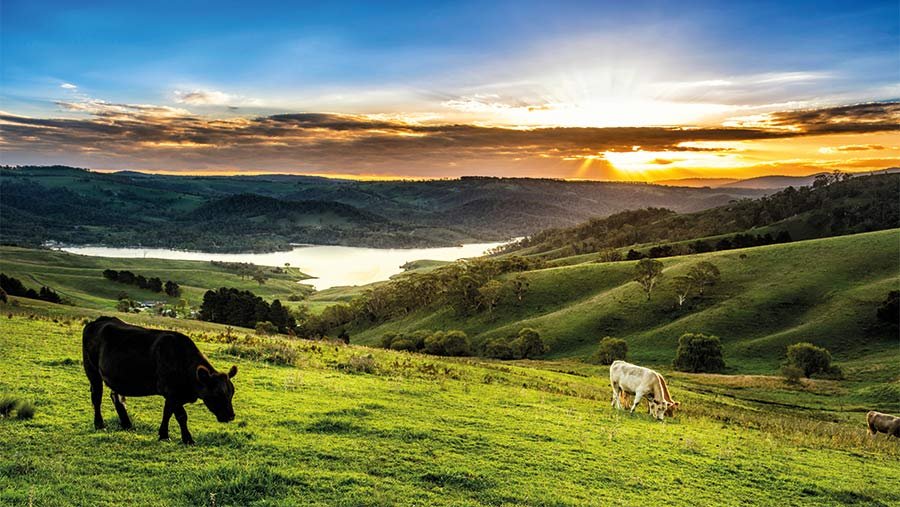
© Leelakajonkij/Adobe Stock
Agri-starter loans run over a 10-year term, with interest-only payments for the first five years, then interest and repayment of the principal loan over the next five years.
The loans are provided to first-time farmers and succession farmers, with various requirements for each type of lending.
In addition to assisting with finance, each of the Australian territories supports young farmers in different ways.
For example, Victoria’s government runs free farm finance workshops and business bootcamps targeted at young producers from beef, sheep, horticulture, and mixed farming businesses.
Through farm business consultants, the Young Farmer and New Entrant Mentoring Program pairs new entrants with a mentor.
The mentor can offer advice and help develop skills in farm business management, as well as risk management and financial literacy.
Canada
The average age of farm operators in Canada was 56 years in 2021, with more than 60% of farmers older than 55 years, according to Canada’s 2021 census of agriculture.
The country’s largest agricultural lender, Farm Credit Canada (FCC), offers a range of specialised loans specifically targeted at young farmers and new starters.
Fact file: Canada
- Farm holdings: 189,874
- Average farm size: 327ha
- Total farm area: 62m ha
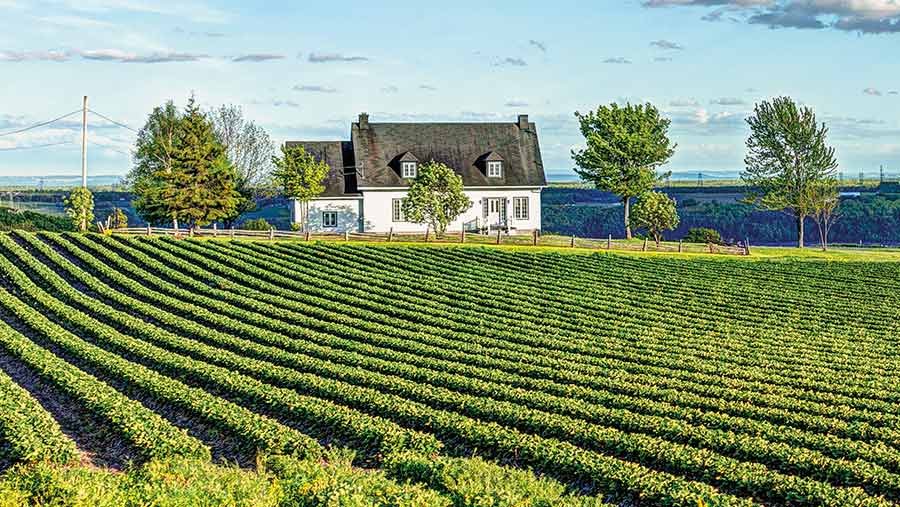
© Kristina Blokhin/Adobe Stock
Starter loans of up to C$150,000 (£90,000) are available for individuals who have started a farm business within the past three years, with special one- to 10-year fixed rates.
There are also young farmer loans for people under 40, with preferential rates for up to C$1.5m (£900,000).
As well as financial support, FCC runs events to teach skills such as farm management and accounting specifically for young farmers.
Alternative funding is provided through the Next Generation Loan Program, provided by the Agriculture Financial Services Corporation.
It offers new entrants and young agricultural producers fixed-rate term loans to establish their own farming operations.
Applicants must be under 40 to apply or over 40 but with less than three years in farming.
Successful applicants who, at the time of application, are less than 40 years of age may also be eligible for a 1% rate reduction for a maximum of five years on the first term of the loan.
As with Australia, there are different provincial approaches and incentives to support young farmers.
For example, Manitoba Agricultural Services Corporation offers The Young Farmer Crop Plan Credit for 18 to 39 year olds to assist with agri-insurance costs and offer cropping advice.
The credit is only open to first-time applicants, with a C$300 (£180) premium subsidy provided by the Province of Manitoba.
United States
The average age of US farmers is rising, though there has been a trend in recent years for the number of new farmers to grow.
The US Department of Agriculture offers loans through its Farm Service Agency (FSA).
These are aimed at established businesses, with both operating and farm ownership loans available.
However, a micro loan of up to US$50,000 (£41,000) is available for new entrants. The interest rates are in line with regular FSA rates, currently 4.375-4.5%.
Fact file: US
- Farms and ranches: 2m
- Agricultural land: 364m ha
- Average farm size: 441ha
A youth loan programme provides loans up to US$5,000 (£4,100) with repayments up to seven years.
Loans are targeted at under 20-year-olds to finance income-producing, agriculture-related projects.
It is typically used for buying livestock, seed, tools and equipment.
Larger-scale funding is offered through the Farm Credit System, a nationwide network of 70 co-operative banks and associations.
It has provided more than US$25.6bn (£20.9bn) in new loans to small farmers.
Farm Credit Council president Todd Van Hoose said: “The commitment Farm Credit lenders make to YBS [young, beginning, and small] farmers and ranchers does not waver, in good years or bad. It’s a critical part of our mission, and we’re dedicated to fulfilling it.”
In 2021, 67,647 new loans, worth US$14.9bn (£12.2bn), were given to young producers aged under 36 by Farm Credit, averaging US$220,261 (£182,300) each.
Case study: Gregory Family Farms, Vernon Hill, Virginia
Clark and Maggy Gregory are new starters who set up Gregory Family Farms, a livestock enterprise in Virginia.
The farm breeds, raises and finishes calves on a rotational system, sold direct to consumers and food retailers.
The cattle are finished at 400-450kg liveweight, lighter than most finished cattle.
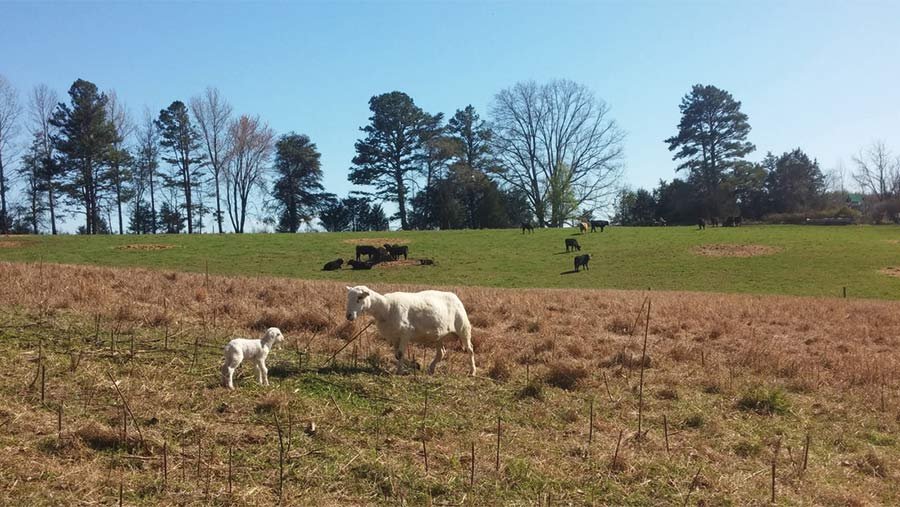
© Gregory Family Farms
The farm also runs a flock of Katahdin cross St Croix ewes, which typically follow cattle in a combined species rotational grazing pattern.
With a growing customer base, the business needed to increase cattle numbers and buy more land to meet demand.
It managed to secure a loan and support through Farm Credit.
“We had a waiting list of customers, but we did not have land for our animals and nowhere to grow, so Farm Credit was invaluable,” says Ms Gregory.
“For us, it was great because Farm Credit said: ‘Yes, we can work with you and make this happen’. They also said: ‘Here’s how we want you to be more successful’.”
The US National Farmers Union runs a free year-long training programme called the Beginning Farmer Institute.
It provides advice on issues such as labour, taxation, accounting, and business structure.
Individual states offer various resources through funding and education.
For example, in Iowa, the Beginning Farmer Centre operates as part of Iowa State University outreach to provide educational resources and programming for new farmers.
The centre also gives support and advice on a range of topics, such as farm tax assistance, agricultural law, and farm business planning.
UK
Support for young farmers and new entrants is provided across the UK through the allocation of BPS entitlements and payment top-ups.
However, in England this support is not available on land acquired after midnight on 17 May 2021.
As BPS is phased out, Defra is running pilot projects to develop new support arrangements.
Early in 2023, a limited number of potential new and young farmers will attend sessions designed to help them overcome barriers to accessing land and finance.
Fact file: UK
- Agricultural holdings: 219,000
- Agricultural land: 18.6m ha
- Average farm size: 81ha

© Lucas Puch/Adobe Stock
“Landowners and finance providers want to support fresh, innovative business thinking, and we want to work with new entrants to understand how to make them less risky as an investment,” says Defra.
In Scotland and Wales, land matching services are available from the Scottish Land Matching Service and the Welsh government’s Farming Connect service.
These provide opportunities for new entrants through collaboration, contract farming agreements and joint partnerships.
See also: Q&A: How the Scottish and Welsh land matching services work
Farming Connect has assisted in facilitating 55 new joint ventures since its inception in 2015.
The Scottish Land Matching Service has helped establish 18 agreements between new entrants and existing businesses during the past two years.
Funding and support for young farmers are offered by a range of non-government organisations across the UK, such as the National Federation of Young Farmers’ Clubs, the Henry Plumb Foundation, and the Prince’s Countryside Fund.
The Henry Plumb Foundation provides £500-£3,000 funding for under 35-year-olds in agriculture. It can be used for business start-ups, internships, travel and courses.
Some providers also offer tenancies specifically for young farmers and new entrants:
- The Duchy of Cornwall offers farm business tenancies on 10- to 20-year terms. These are heavily subscribed, with only one or two farms coming up for tender each year. New entrants and young farmers are encouraged to apply
- Yorkshire Water’s Next Generation Farming programme, launched in 2021, provides a five-year tenancy on an 84ha farm in Yorkshire for young farmers starting their careers
- Farming charity the Addington Fund has launched a Young Entrants Scheme. It will work in partnership with banks and land agents to match new entrants with farms.












